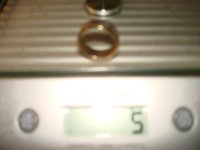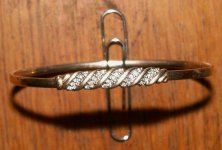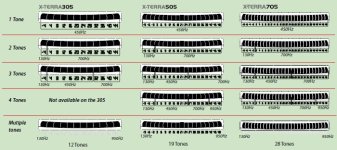I did not know this and ive been passing over targets +16 to+28
If you are passing over targets represented by the X-TERRA 70 and the
705 with a numeric TID of +2, +4 and +6, you risk missing rose gold
rings, platinum rings, white gold rings and some foreign coins.
If you are passing over targets represented with a TID of +6, +8 and +10,
you risk missing more white gold rings, more platinum rings, thin yellow
gold rings, lead and brass shells and the U.S. nickel three-cent piece.
If you set your detector to reject TID numbers +14 and +16, you will
risk missing very thin silver coins, the $1.00 U.S. Gold coin, thin yellow
gold rings, Shield nickels, Liberty V nickels, 40% silver War nickels, many
wedding bands, 10kt class rings, tokens and more foreign coins.
If you set your notches to reject +16, +18 and +20, you will risk missing
gold rings, tokens, various gold jewelry, 14kt rings, brass, the U.S. $2.50
gold piece, Indian Head cents, Flying Eagle cents, more foreign coins
and even large 10kt class rings.
If you rejected notch segments +20, +22, +24 and +26, you risk missing
more Indian Head pennies, the U.S. silver three-cent piece, the U.S.
$5 Gold piece, large gold rings, small silver pieces, gold jewelry and
medallions, and still more old tokens.
If you are passing over targets represented by the X-TERRA 70 and the
705 with a numeric TID of +2, +4 and +6, you risk missing rose gold
rings, platinum rings, white gold rings and some foreign coins.
If you are passing over targets represented with a TID of +6, +8 and +10,
you risk missing more white gold rings, more platinum rings, thin yellow
gold rings, lead and brass shells and the U.S. nickel three-cent piece.
If you set your detector to reject TID numbers +14 and +16, you will
risk missing very thin silver coins, the $1.00 U.S. Gold coin, thin yellow
gold rings, Shield nickels, Liberty V nickels, 40% silver War nickels, many
wedding bands, 10kt class rings, tokens and more foreign coins.
If you set your notches to reject +16, +18 and +20, you will risk missing
gold rings, tokens, various gold jewelry, 14kt rings, brass, the U.S. $2.50
gold piece, Indian Head cents, Flying Eagle cents, more foreign coins
and even large 10kt class rings.
If you rejected notch segments +20, +22, +24 and +26, you risk missing
more Indian Head pennies, the U.S. silver three-cent piece, the U.S.
$5 Gold piece, large gold rings, small silver pieces, gold jewelry and
medallions, and still more old tokens.


 i live by this
i live by this


